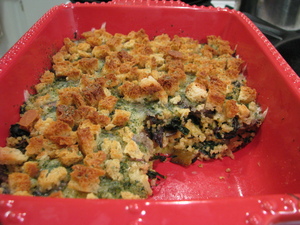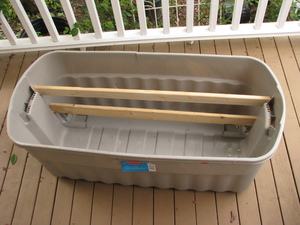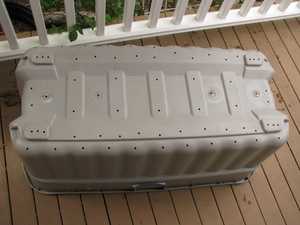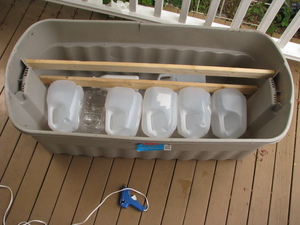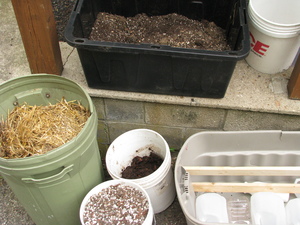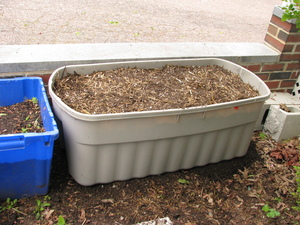Notes on covid deisolation guidelines
Aug. 11th, 2024 02:38 pmAs I'm recovering from covid, I've been trying to figure out when I can *stop* isolating. Specifically, how do I know when I'm no longer contagious? This is surprisingly difficult! I'm going to share what I've learned so far, and I'd love to hear about any papers you can find that add new information or contradict what I've found.
The most likely protocol would be built around symptoms, tests, and timelines. But these are hard to rely on.
The first problem is that symptoms don't necessarily correlate with contagiousness. People are most contagious *before* their symptoms even appear, and symptoms can continue well after the virus is effectively cleared. (And of course asymptomatic cases can be *very* effective at spreading a virus.) Some symptoms are strongly indicative of what stage of infection the person is in. Fever is a strong indication of active infection, for instance, and anyone with a fever definitely should continue isolating. But others are less specific (such as coughing or fatigue), and those less specific ones kind of drag on, leaving a lot of uncertainty.
Another problem is that PCR and rapid antigen tests (RATs) detect viral fragments, not whole, live, infectious viruses. In the tail end of an infection, your body still has a lot of cells churning out broken chunks of virus that are basically harmless but that will give positives on these tests, so just going by positives may keep you in isolation for too long. PCR in particular is ridiculously sensitive. One interesting thing is that unlike RATs, PCR gives you quantitative information -- the number of cycles required before the test comes up positive (the "cycle time", or "Ct") can tell you about the relative density of viral RNA in the sample. But this information isn't necessarily available to individuals getting tested at a pharmacy, and it's not obvious what thresholds might be meaningful. The most accurate information you could plausibly get would be via culturing respiratory particles from an infected person and seeing if SARS-CoV-2 spreads in the culture. But this option is completely inaccessible except for specialized research labs, so at most this can be used to *validate* other approaches.
And finally, there's just a lot of individual variation in how long people remain contagious. Some people start testing negative after just 5 days, while others are still testing positive on RATs for 15+ days. People with compromised immune systems in particular can in some cases stay contagious for months, and that likely includes people taking immunosuppressive drugs. I also have some questions about the effects of paxlovid; when I took it, my covid symptoms almost completely went away, and then returned a couple days after the last dose. I'm sure it dramatically reduced my illness overall, but I have to wonder if it so thoroughly suppressed viral replication that it actually "reset the clock" and I should really count days from post-paxlovid symptom return, rather than from the original onset. (I wonder what would happen in a trial of a reduced dose of paxlovid for a longer period!)
The paper I've found so far that appears most promising is Deisolation in the Healthcare Setting Following Recent COVID-19 Infection, a review article from 2024 in the journal Viruses. It has the goal of helping healthcare facilities establish guidelines for when to take patients out of isolation.
A word of caution on this paper: I'm not an academic, and I'm really not qualified to evaluate papers or journals, but I think it's worth noting that the organization behind this journal, MPDI, seems to not do a great job of filtering for quality. So it may be worth mostly using this review article as a source of citations to other papers, maybe in journals by less controversial publishers. I do like that this paper is from 2024, but... a lot of its sources are from 2020 or 2021, studying earlier strains of the virus. Something to keep in mind.
One of the most important bits of information here is that when viral cultures have been taken, they've generally indicated that 10 days is *roughly* the usual limit for contagiousness:
Their main recommendation uses a combination of symptoms, tests, and timelines:
In the context of healthcare workers themselves deisolating and returning to work:
***
The second useful paper I found was Duration of Severe Acute Respiratory Syndrome Coronavirus 2 (SARS-CoV-2) Infectivity: When Is It Safe to Discontinue Isolation?, from August 2020. (This was actually cited in the first paper, but with an incorrect title.) It has a table reviewing evidence around viral culture, PCR cycle time, days from symptom onset, and contact tracing. Note that some of the sources are for severe and critical illness, which you should generally expect to require longer isolation times than asymptomatic or mild cases. But overall it paints a picture of 10 days being a reasonable cutoff for mild/moderate cases (if tests haven't started showing negatives yet).
The challenges
The most likely protocol would be built around symptoms, tests, and timelines. But these are hard to rely on.
The first problem is that symptoms don't necessarily correlate with contagiousness. People are most contagious *before* their symptoms even appear, and symptoms can continue well after the virus is effectively cleared. (And of course asymptomatic cases can be *very* effective at spreading a virus.) Some symptoms are strongly indicative of what stage of infection the person is in. Fever is a strong indication of active infection, for instance, and anyone with a fever definitely should continue isolating. But others are less specific (such as coughing or fatigue), and those less specific ones kind of drag on, leaving a lot of uncertainty.
Another problem is that PCR and rapid antigen tests (RATs) detect viral fragments, not whole, live, infectious viruses. In the tail end of an infection, your body still has a lot of cells churning out broken chunks of virus that are basically harmless but that will give positives on these tests, so just going by positives may keep you in isolation for too long. PCR in particular is ridiculously sensitive. One interesting thing is that unlike RATs, PCR gives you quantitative information -- the number of cycles required before the test comes up positive (the "cycle time", or "Ct") can tell you about the relative density of viral RNA in the sample. But this information isn't necessarily available to individuals getting tested at a pharmacy, and it's not obvious what thresholds might be meaningful. The most accurate information you could plausibly get would be via culturing respiratory particles from an infected person and seeing if SARS-CoV-2 spreads in the culture. But this option is completely inaccessible except for specialized research labs, so at most this can be used to *validate* other approaches.
And finally, there's just a lot of individual variation in how long people remain contagious. Some people start testing negative after just 5 days, while others are still testing positive on RATs for 15+ days. People with compromised immune systems in particular can in some cases stay contagious for months, and that likely includes people taking immunosuppressive drugs. I also have some questions about the effects of paxlovid; when I took it, my covid symptoms almost completely went away, and then returned a couple days after the last dose. I'm sure it dramatically reduced my illness overall, but I have to wonder if it so thoroughly suppressed viral replication that it actually "reset the clock" and I should really count days from post-paxlovid symptom return, rather than from the original onset. (I wonder what would happen in a trial of a reduced dose of paxlovid for a longer period!)
New info
The paper I've found so far that appears most promising is Deisolation in the Healthcare Setting Following Recent COVID-19 Infection, a review article from 2024 in the journal Viruses. It has the goal of helping healthcare facilities establish guidelines for when to take patients out of isolation.
A word of caution on this paper: I'm not an academic, and I'm really not qualified to evaluate papers or journals, but I think it's worth noting that the organization behind this journal, MPDI, seems to not do a great job of filtering for quality. So it may be worth mostly using this review article as a source of citations to other papers, maybe in journals by less controversial publishers. I do like that this paper is from 2024, but... a lot of its sources are from 2020 or 2021, studying earlier strains of the virus. Something to keep in mind.
One of the most important bits of information here is that when viral cultures have been taken, they've generally indicated that 10 days is *roughly* the usual limit for contagiousness:
Viral culture observing for cytopathic effects and/or substantial increases in the viral load by RT-PCR remains the gold standard for detecting viable virus in respiratory samples. SARS-CoV-2 will not be isolated in the majority of specimens collected from patients with mild to moderate disease by days 8–11 post-symptom onset [20,22,24,32,33,34,35].
Their main recommendation uses a combination of symptoms, tests, and timelines:
Recommendation: In light of the above, for asymptomatic, mild, or moderate disease in non-immunocompromised patients, regardless of vaccination status, deisolation should be considered if the patient is asymptomatic by day five and has either a negative RAT or RT-PCR test on day six or seven. If SARS-CoV-2 RNA is detected by RT-PCR, but with a Ct value ≥ 30, a RAT should be performed and the decision to deisolate determined by the RAT result. In the absence of further testing, ten days of isolation should be observed (Table 4).
In the context of healthcare workers themselves deisolating and returning to work:
Ongoing lethargy and a lingering dry cough may, however, be expected and should not preclude return to work.
***
The second useful paper I found was Duration of Severe Acute Respiratory Syndrome Coronavirus 2 (SARS-CoV-2) Infectivity: When Is It Safe to Discontinue Isolation?, from August 2020. (This was actually cited in the first paper, but with an incorrect title.) It has a table reviewing evidence around viral culture, PCR cycle time, days from symptom onset, and contact tracing. Note that some of the sources are for severe and critical illness, which you should generally expect to require longer isolation times than asymptomatic or mild cases. But overall it paints a picture of 10 days being a reasonable cutoff for mild/moderate cases (if tests haven't started showing negatives yet).
